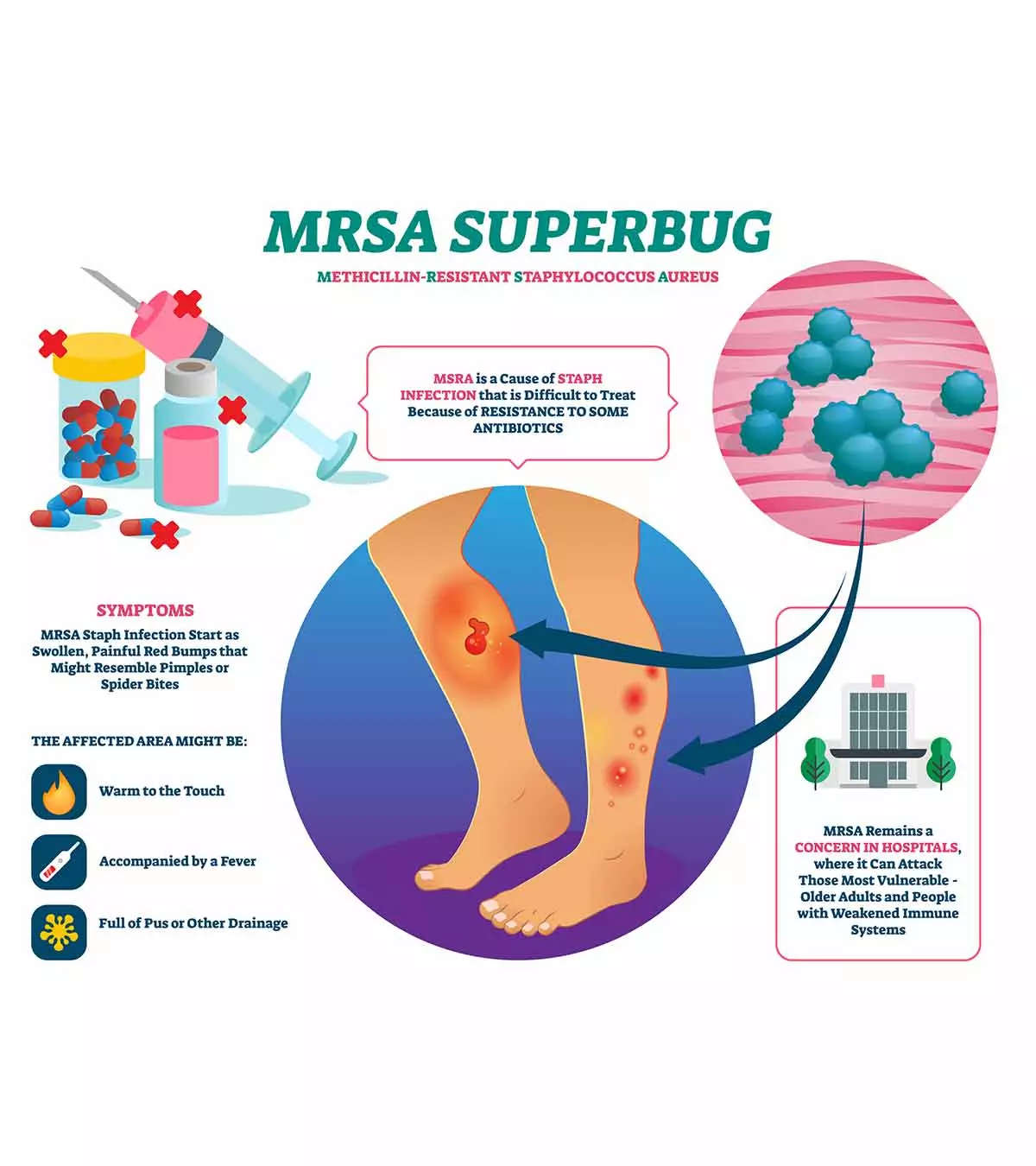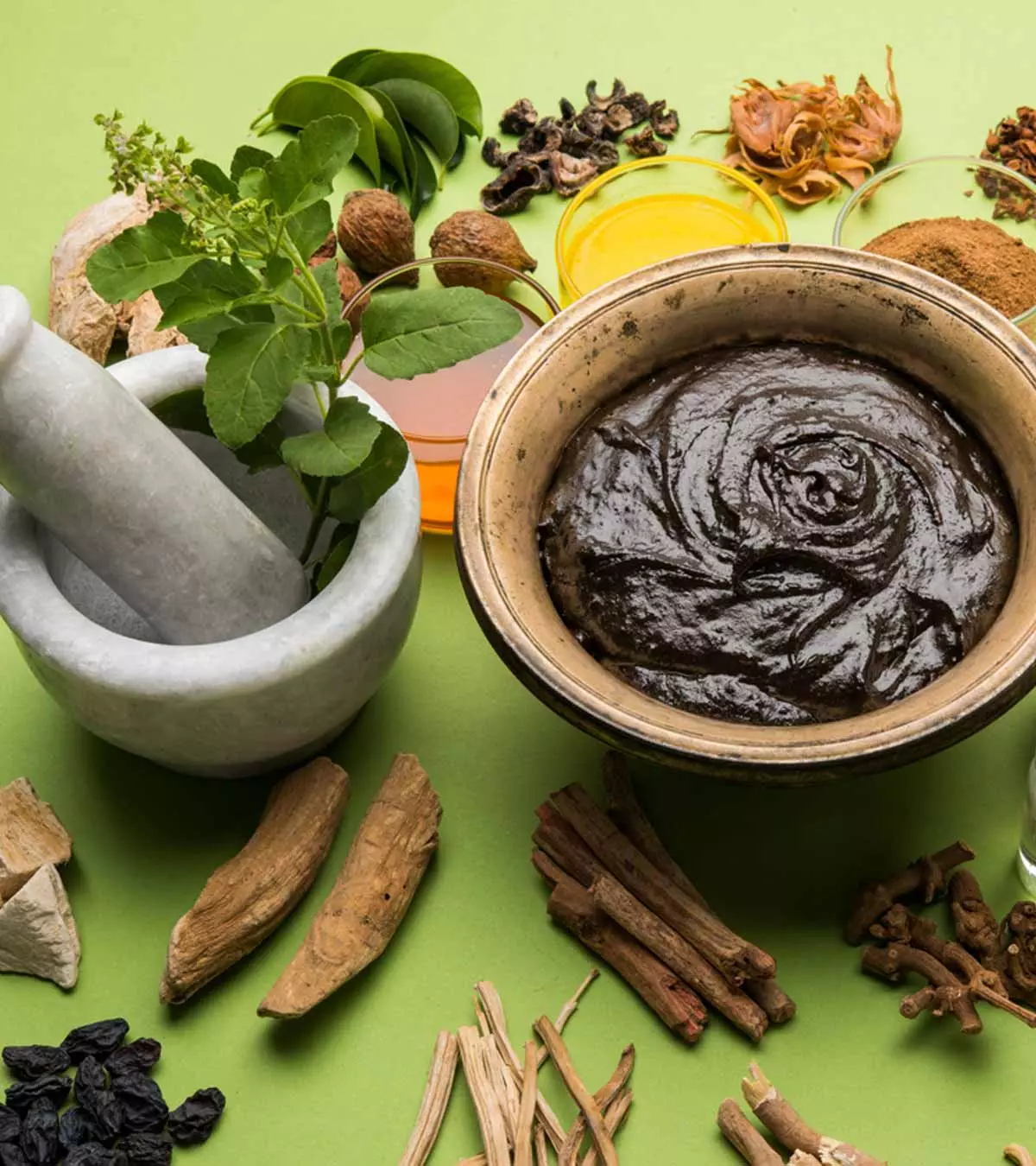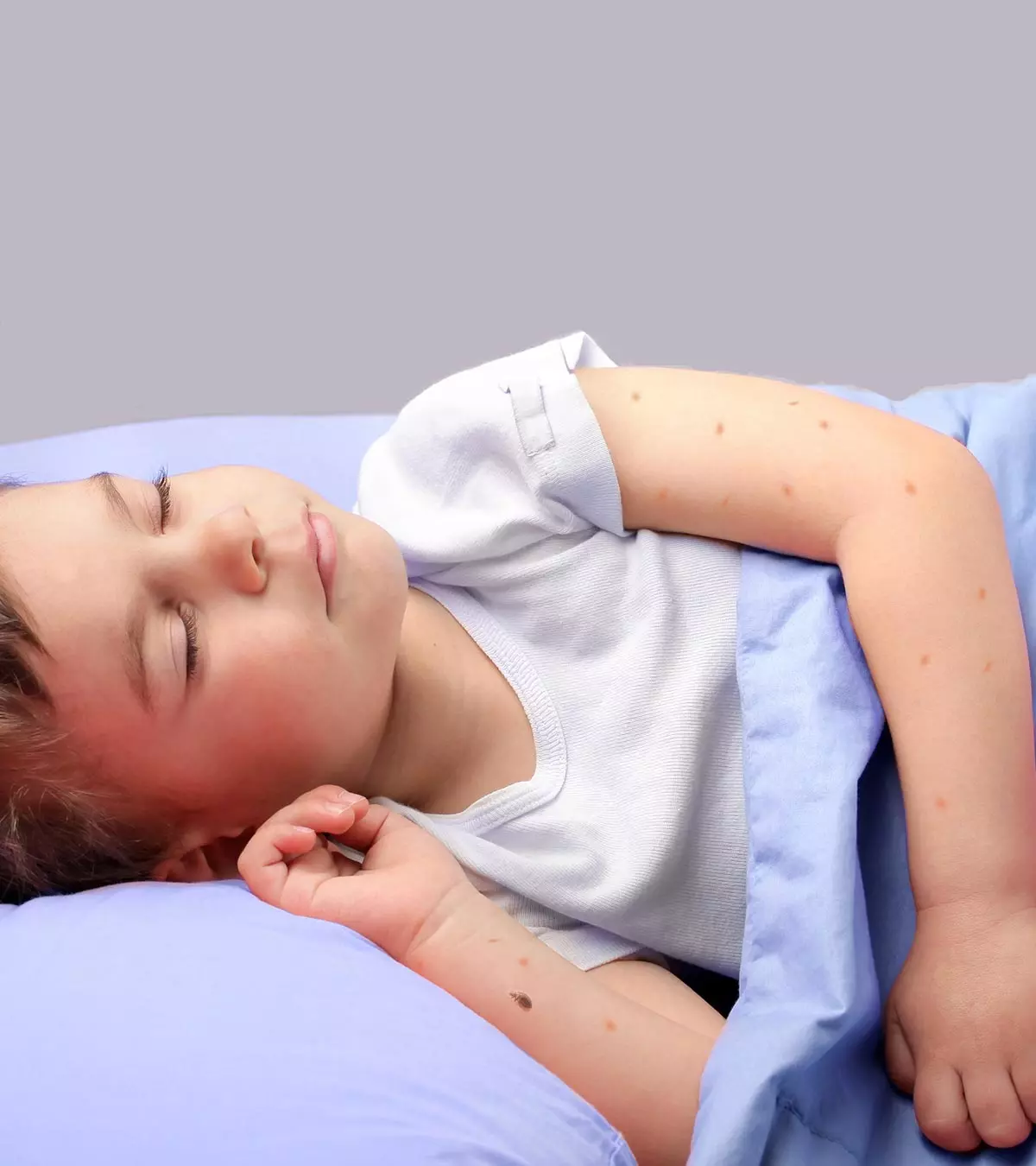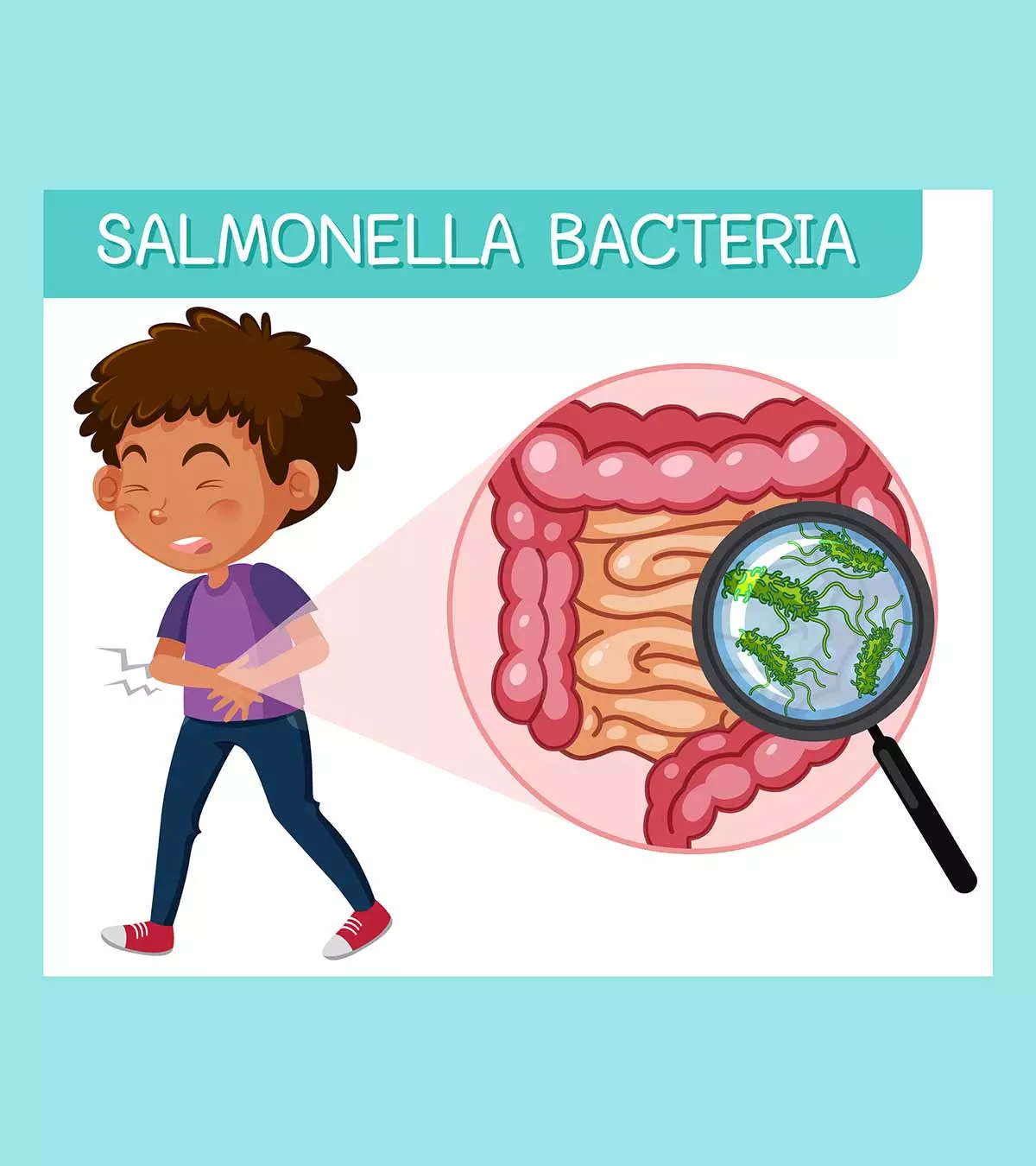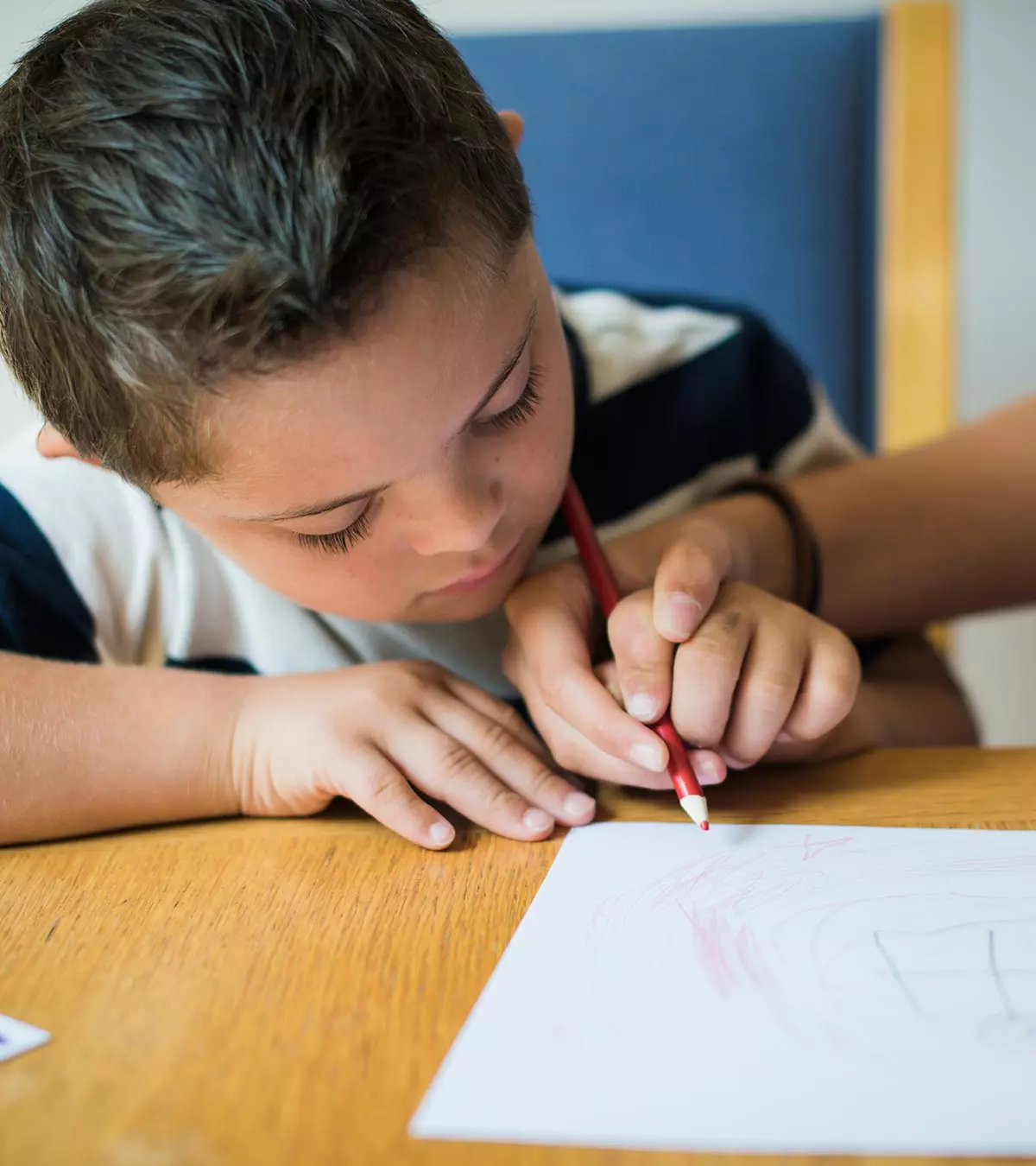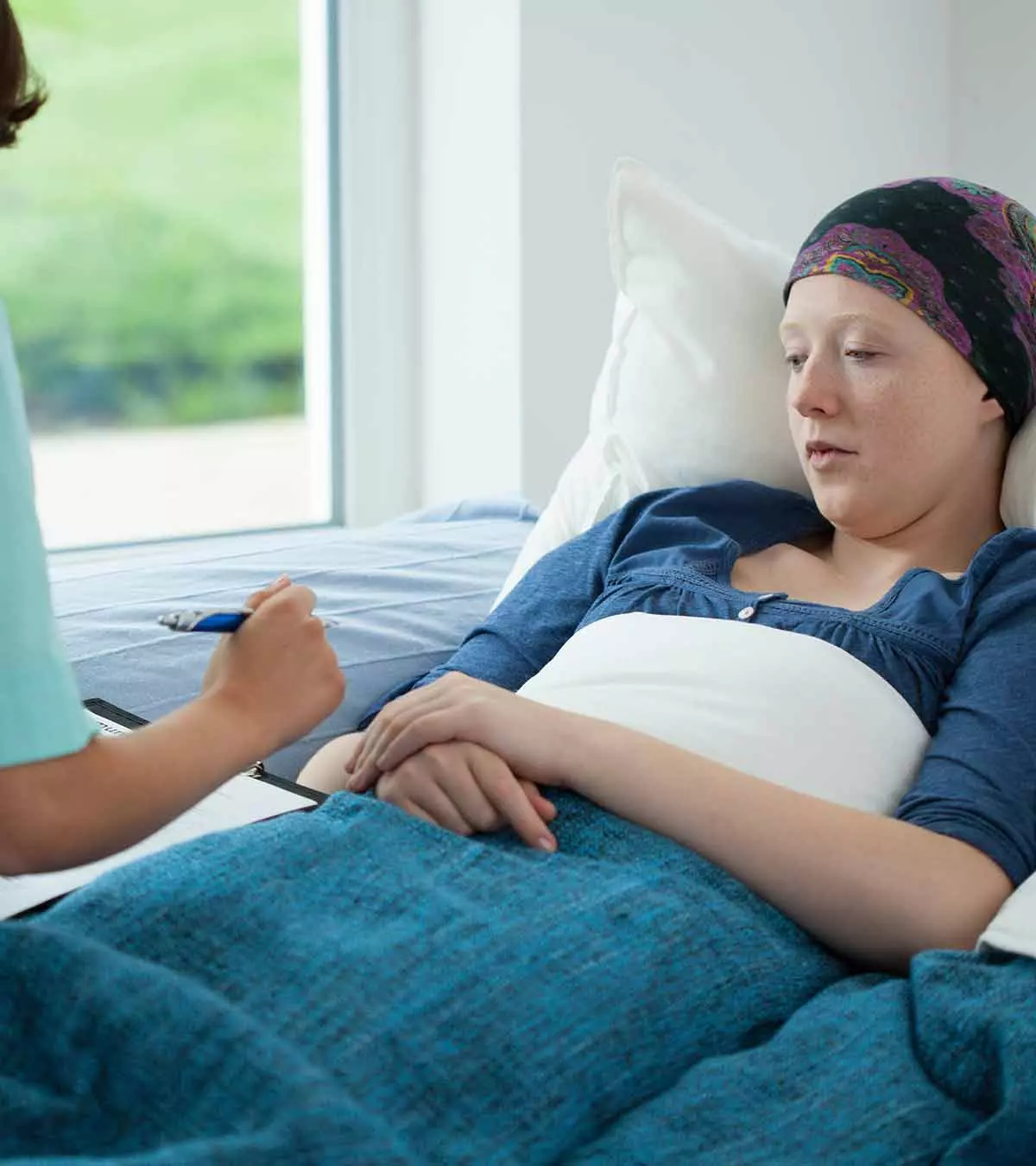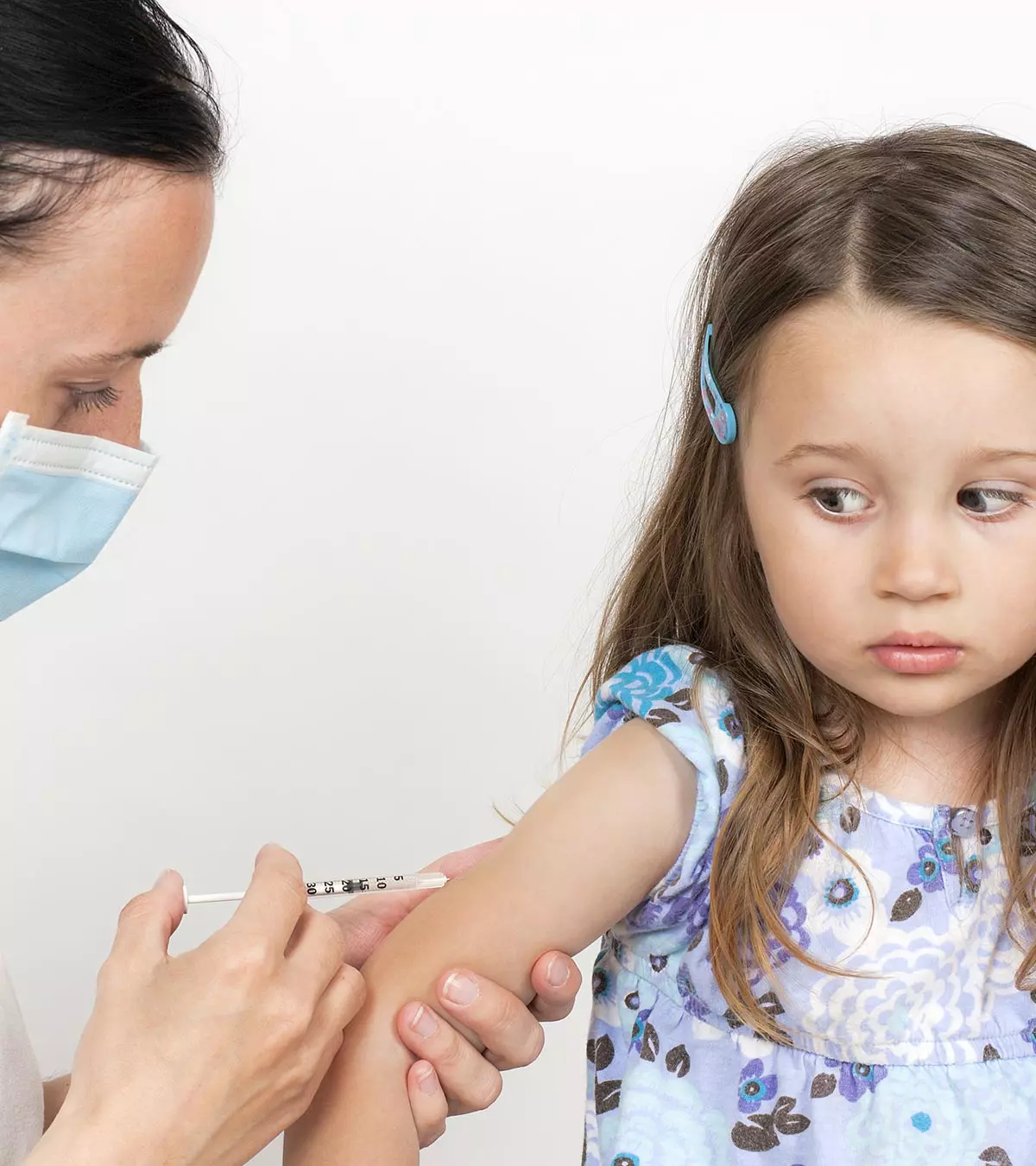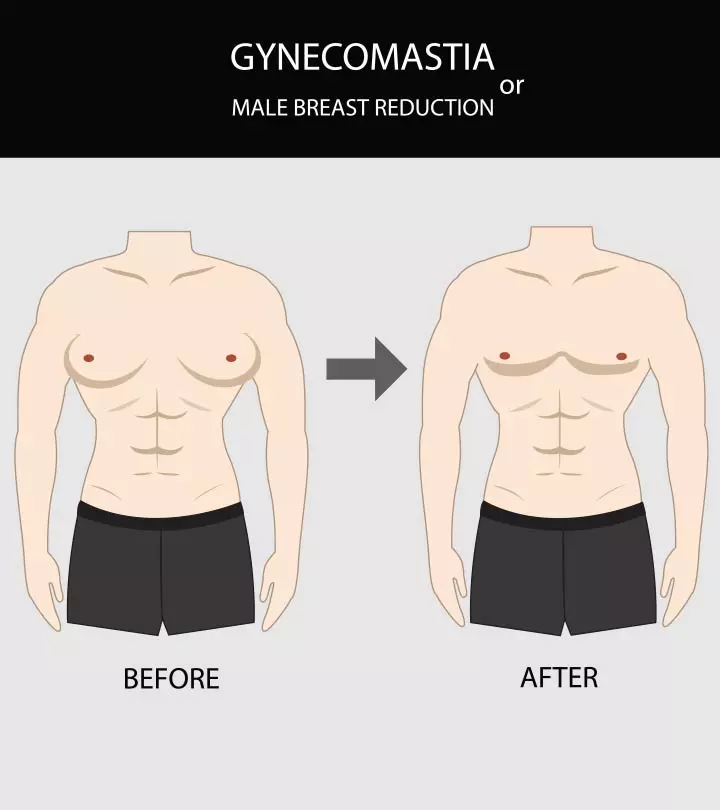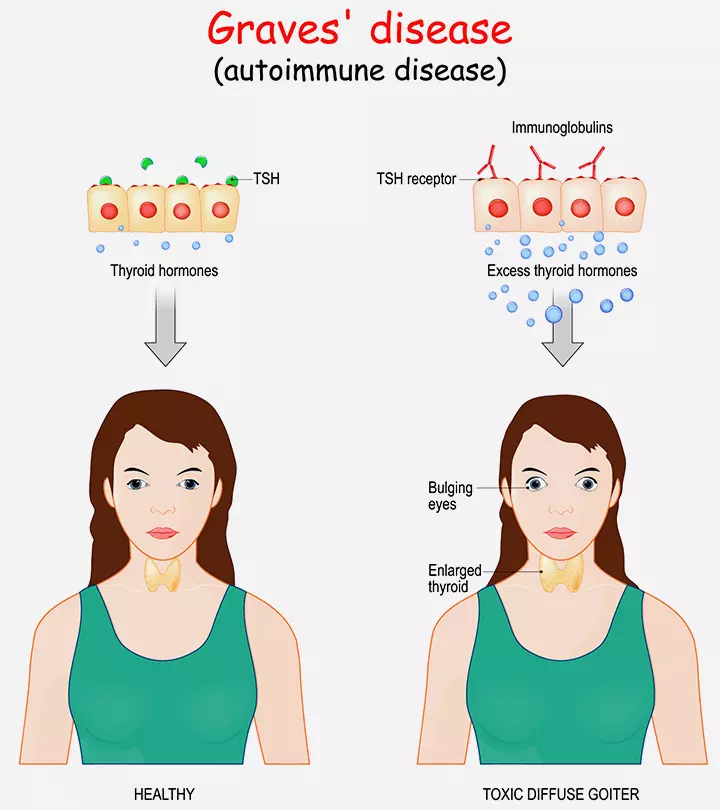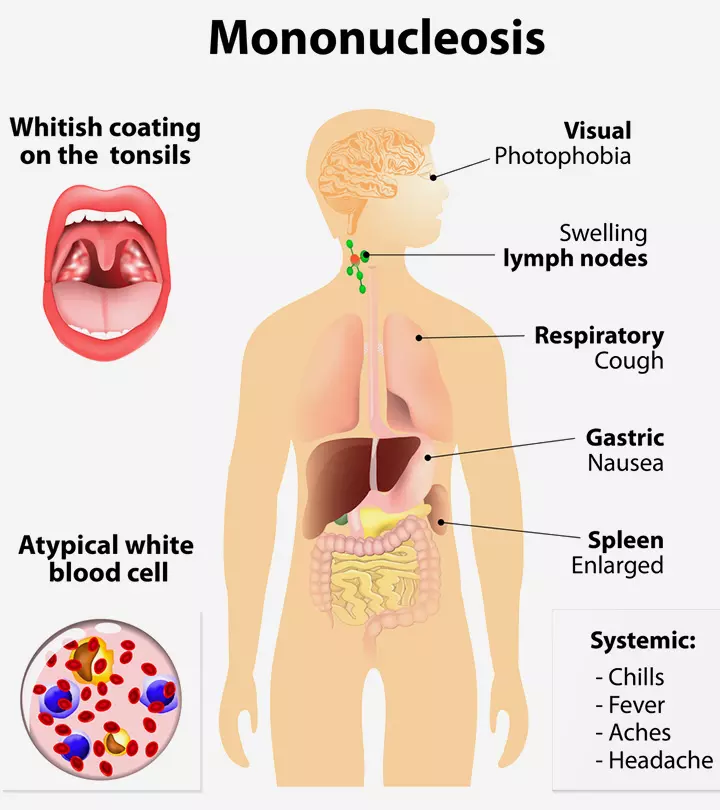
Image: Shutterstock
Mono in kids is a common viral infection characterized by fatigue, sore throat, fever, and swollen lymph nodes. Mono or infectious mononucleosis is also known as glandular fever or kissing disease.
The disease is caused by the Epstein-Barr virus (EBV) of the herpes virus family. It is a highly transmissible infection that can spread through saliva and other bodily fluids. After a child’s exposure to the disease, the virus stays in the dormant state forever in the blood (1).
Read on to know more about mono in children, including its causes, symptoms, and treatments.
Key Pointers
- Mononucleosis or mono in children is a highly contagious viral infection caused by the Epstein-Barr virus (EBV).
- It commonly spreads from one child to another via body fluid, such as saliva, while kissing or sneezing.
- Sore throat, extreme fatigue, fever and chills, and appetite loss are common symptoms that vary in intensity.
- Although rare, mono in some cases could cause complications, such as the ruptured spleen, hemolytic anemia, and meningitis.
Causes Of Mono In Children
While EBV is the most common cause of mono in children, mild mono-like symptoms can also be caused by cytomegalovirus (CMV) (2).
EBV and CMV are extremely common, and most children get exposed to them at some point in their lives. While infected infants and young children develop mild or no symptoms, infected teens and young adults have a 50% chance of developing some mono symptoms (3).
 Quick fact
Quick factIs Mono A Contagious Infection?
One may wonder if mononucleosis is contagious and if yes, then how is mono spread? To answer that, mononucleosis is highly contagious and generally spreads from one person to another through bodily fluids, such as saliva. It often spreads through sneezing, kissing, eating or drinking from the same utensils, or sharing items with saliva on them. Occasionally, the viral illness might be transmitted sexually or through blood transfusion.
Once a child is infected with the virus, their likelihood of developing the illness again is rare. However, the virus stays dormant in their throat and blood for life. In rare cases, when this virus becomes active again, the child can transmit the disease to others without presenting any symptoms themselves (4).
 Be watchful
Be watchfulSymptoms Of Mono In Children
The mononucleosis symptoms in children may vary from mild to severe. Once a child is infected with EBV, it takes four to six weeks for the symptoms to show.
Some common symptoms of mono in children may include (1) (3)
- Fever and chills
- Extreme fatigue
- Sore throat that makes swallowing difficult
- Headache
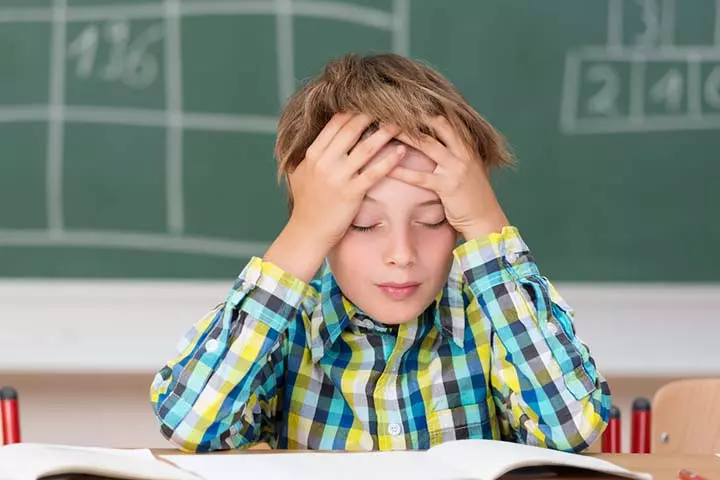
Image: Shutterstock
- Sensitivity to light
- Loss of appetite
- Muscle aches and weakness
- Swollen glands (lymph nodes) in the neck, armpits, and groin
- Enlarged liver and spleen
- Rash
In addition to the more common symptoms, some people may experience puffy eyes, nausea, chest pain, and trouble breathing.
Complications Of Mono
Often, mono does not cause any serious complications. However, in some rare cases, a child may manifest the following complications (5) (6).
1. Ruptured spleen: An enlarged spleen occurs in more than half of the people with mono. When the enlarged spleen ruptures, it can be life-threatening and requires immediate surgery. Advise the child with infectious mononucleosis to avoid strenuous exercises and contact sports (such as wrestling, boxing, rugby, or soccer) until their symptoms subside and the spleen returns to its actual size.
2. Cardiac problems: Children infected with mono might have irregular heart rhythms during the first three weeks of the infection. However, the condition often resolves on its own.
3. Meningitis: EBV can cause meningitis, a disease characterized by the inflammation of the membranes and fluid of the brain and spinal cord.
4. Encephalitis: Encephalitis is the inflammation in the brain that can cause behavioral changes, muscle weakness, and dizziness.

Image: Shutterstock
5. Hemolytic anemia: Hemolytic anemia is a condition wherein the red blood cells in the body are destroyed at a much faster rate than they are made.
 Be watchful
Be watchfulDiagnosis Of Mono
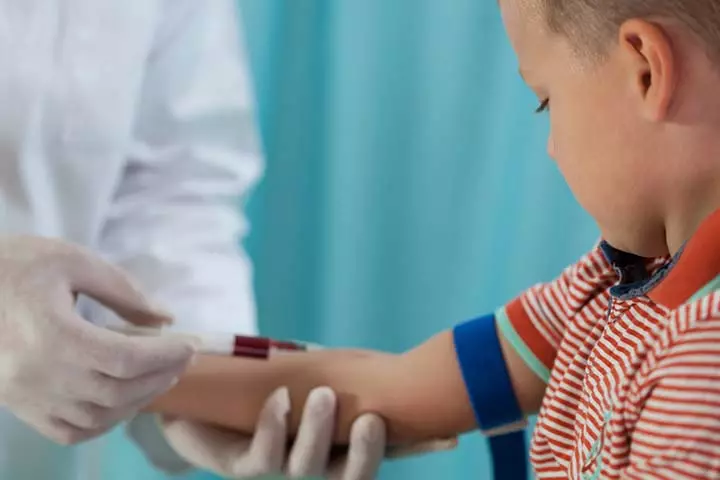
Image: Shutterstock
The diagnosis of mono may be made based on your child’s symptoms, medical history, blood test, and physical examination (7) (8).
A heterophile antibody test called the mono test or monospot may be performed as an initial test for mono as it provides 71 to 90% accurate results. A positive monospot test indicates the presence of infectious mononucleosis.
A blood test is done to detect the antibodies that fight against EBV in the body. It also helps check an abnormal white blood cell count and the presence of atypical lymphocytes.
The physical examination enables the doctor to check for signs of enlarged lymph nodes, liver, and spleen.
How Is Mono Treated In Children?
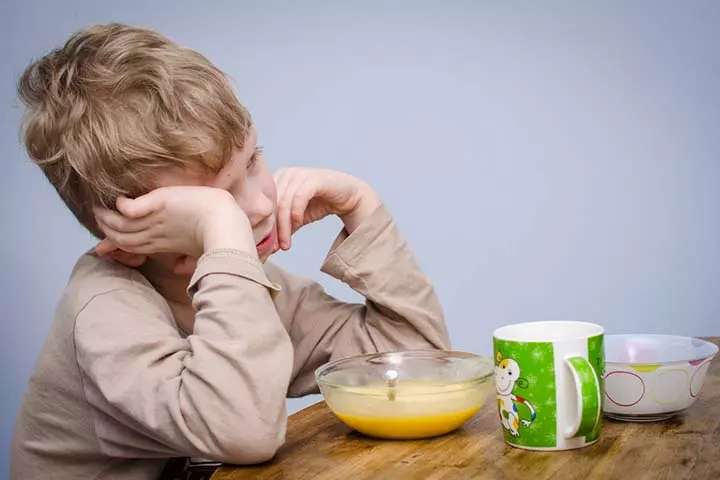
Image: Shutterstock
No cure or vaccine for mono exists. And since it is a viral disease, antibiotics are not recommended. Moreover, antibiotics might sometimes cause skin rashes in children with mono (4).
Treatment centers on supportive care, aiming to manage symptoms while keeping the child well-rested. Your child’s doctor may suggest the following measures to relieve the symptoms of mono (9) (10).
- Taking plenty of rest to help the body fight the infection
- Drinking water to prevent dehydration
- Drinking soups and smoothies to nourish the body
- Gargling with warm salt water or sucking throat lozenges to soothe a sore throat
- Taking over-the-counter medications such as acetaminophen or ibuprofen to alleviate pain and fever
- Taking multivitamins and probiotics to boost the immune system
- Taking steroids after consulting with the doctor to reduce swelling in the throat and tonsils
- Avoiding vigorous exercise and contact sports at all costs to avoid spleen rupture
Note:
Do not administer aspirin to children with mono, as it can lead to a severe illness called Reye syndrome, which can affect the liver and even prove fatal.
How Long Does It Take A Child To Recover From Mono?
The recovery period varies from person to person. Most children feel better within two to four weeks. However, in some children, fatigue or tiredness can last for several more weeks (4) (11).
Can Mono Be Prevented?
No vaccine is available to prevent mono. However, children can take the following precautions to protect themselves from mono (10).
- Avoiding contact with those who show signs of mono or any other infection
- Practicing good hygiene
- Washing hands often
- Avoiding sharing drinks, utensils, toothbrushes, straws, lip balms, etc.
When To See A Doctor?

Image: Shutterstock
If your child develops flu-like symptoms that do not go away in a few days, you should see a doctor. Keep an eye on the following symptoms (1) (10).
- Extreme weakness and fatigue
- Difficulty in breathing, swallowing, or eating
- Constant high fever
- Severe headache and body ache
- Abdominal pain on the left side
- Dizziness
Frequently Asked Questions
1. How long is a child with mono contagious?
A child with mono is contagious from the moment they are infected with the virus. Furthermore, the risk of contamination increases when they start to show symptoms that may last for two to four weeks or more. Sometimes, the virus stays dormant in the child and may spread if the child doesn’t follow personal hygiene etiquettes. Hence, it is advisable to ensure children follow good personal hygiene to avoid spreading mono (12).
2. Is mono an STD?
Mono can partially be considered an STD as it spreads through kissing. The causative virus of mono, i.e., the Epstein Barr virus, is a type of Herpes virus. But, it is different from the Herpes simplex virus (HSV), which causes an STD. Although mono can spread through sexual acts, it is more likely to spread through other actions like sharing a drink or kissing (1).
3. Does mono go away on its own?
Viral infections in children like mono usually go away on their own. However, medications might be necessary to alleviate the symptoms (1).
4. How long do fevers last with mono?
Fevers caused by mono could last for up to two weeks (13).
Mono in kids is a self-limiting infection that does not usually cause any complications. The recovery process varies from one child to another, and thus it is vital to take proper care of your child and ensure that they get adequate rest. Since there are no vaccines available for this disease, it is important that you teach your child to follow proper hygienic practices and keep their surroundings clean. If your child shows signs of extreme weakness, fever, and dizziness, it is advised to promptly consult your pediatrician.
Infographic: How To Manage The Symptoms Of Mono Infection?
Mono or infectious mononucleosis is a viral illness that causes fever, chills, headache, fatigue, loss of appetite, and other symptoms in children. Since antibiotics do not work on this condition and it has no cure or vaccine, the primary management involves reducing the intensity of the symptoms. Check out the following infographic to learn helpful care tips for mono infection in children.
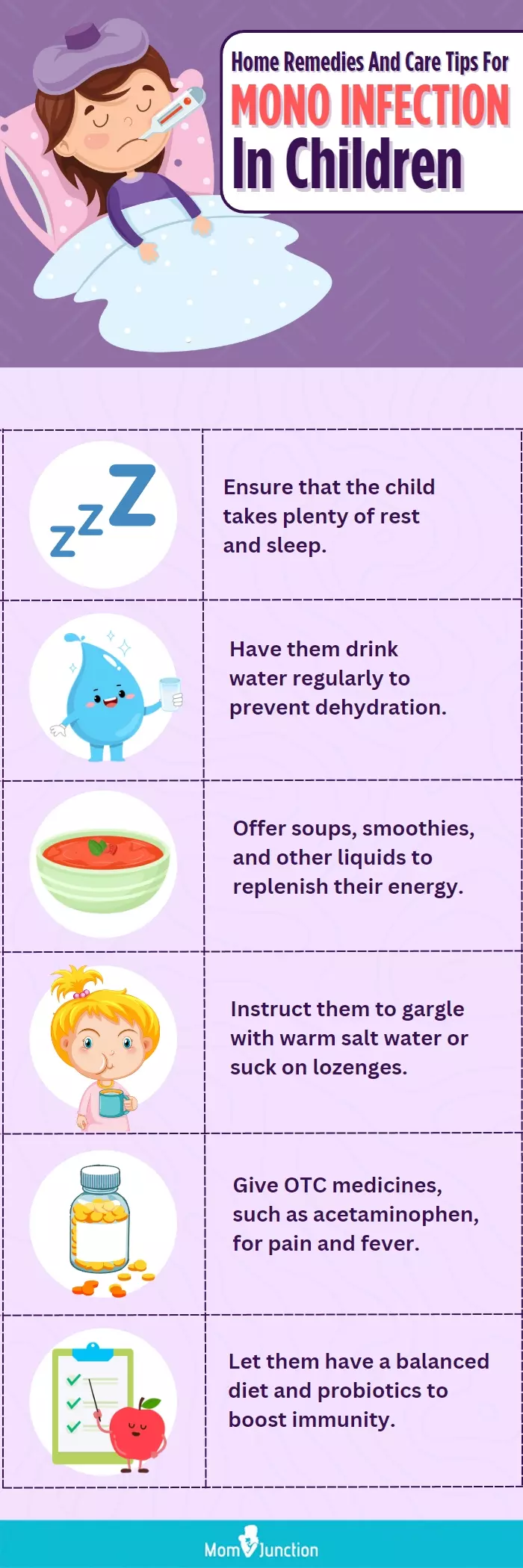
Illustration: Momjunction Design Team
Illustration: Mono In Kids: Causes Symptoms Treatment And Prevention
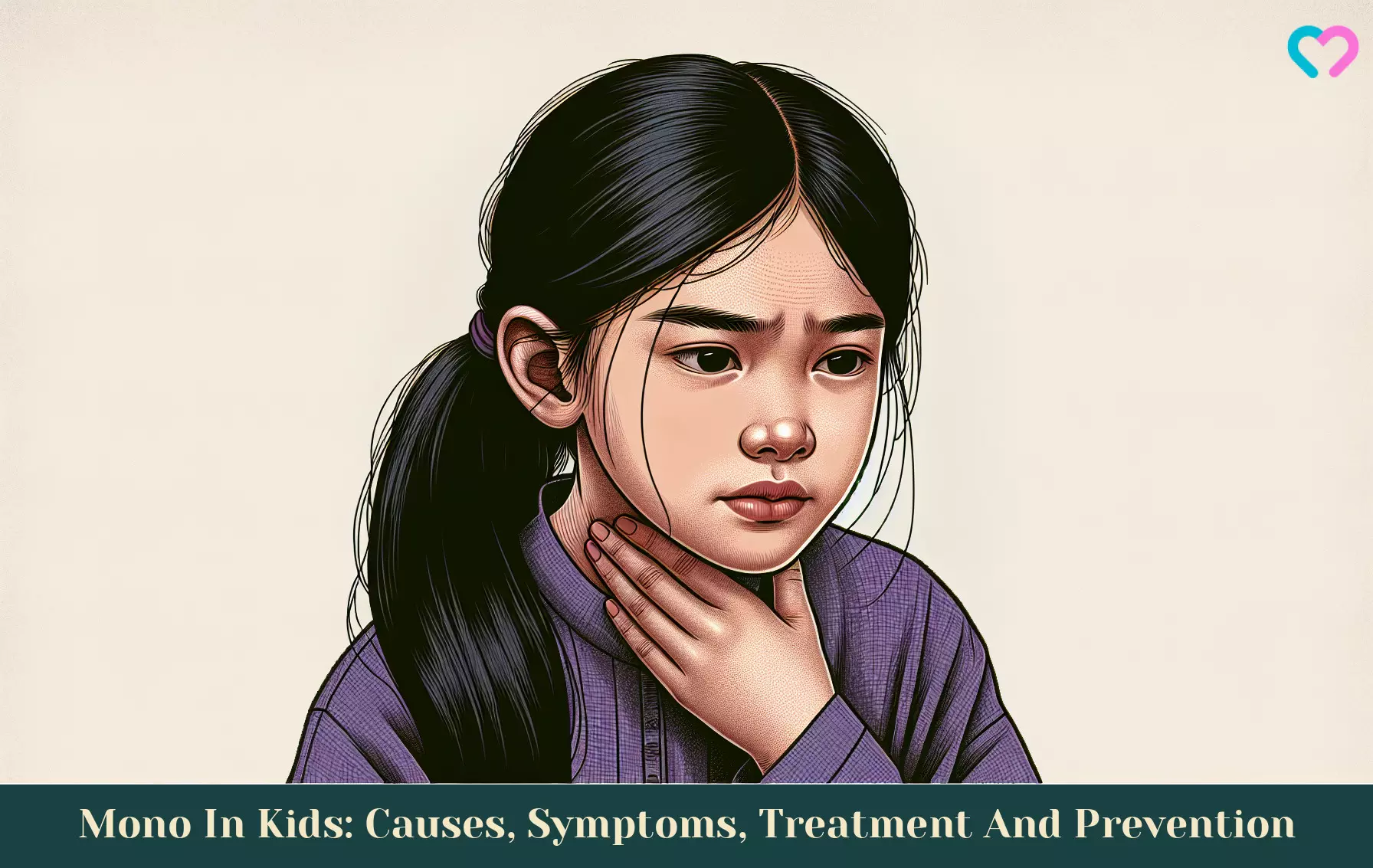
Image: Dall·E/MomJunction Design Team
Mono also known as the kissing disease can affect kids. Check out this informative video to learn about how this contagious disease spreads and what are its symptoms.
References
- Mononucleosis.
https://my.clevelandclinic.org/health/diseases/13974-mononucleosis - Cytomegalovirus (CMV).
https://kidshealth.org/en/parents/cytomegalovirus.html - Infectious Mononucleosis.
https://www.childrenshospital.org/conditions-and-treatments/conditions/i/infectious-mononucleosis - Mononucleosis (Mono).
https://kidshealth.org/en/parents/mono.html - Mononucleosis Complications.
https://www.uofmhealth.org/health-library/hw168267 - Jason Womack and Marissa Jimenez; (2015); Common Questions About Infectious Mononucleosis.
https://www.aafp.org/pubs/afp/issues/2015/0315/p372.html - Infectious Mononucleosis.
https://www.hopkinsmedicine.org/health/conditions-and-diseases/infectious-mononucleosis - Mononucleosis (Mono) Test.
https://www.testing.com/tests/mononucleosis-mono-test/ - Infectious Mononucleosis.
https://uhs.umich.edu/mono - Mononucleosis (Infectious).
https://www.nationwidechildrens.org/conditions/mononucleosis - Mononucleosis.
https://www.healthychildren.org/English/health-issues/conditions/infections/Pages/Mononucleosis.aspx
Community Experiences
Join the conversation and become a part of our nurturing community! Share your stories, experiences, and insights to connect with fellow parents.
Read full bio of Maria Carmela Villania-Mamauag
Read full bio of Pragya Bhargavi
Read full bio of Dr. Ritika Shah
Read full bio of Dr. Joyani Das








